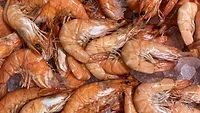Cornell Scientists Discover Five Unknown Species to Listeria Genus

According to a new study in the International Journal of Systematic and Evolutionary Microbiology, Cornell researchers have found five previously unknown and novel kinds of Listeria. The discovery was made while examining the prevalence of Listeria in U.S. agricultural soil.
The researchers say that identifying these novel species will help food facilities improve food safety by identifying potential growth niches that may have previously been overlooked.
One of the novel species found, Listeria immobilis, lacked motility, that is, was unable to move. Motility has been thought to be common among Listeria species—for example, L. monocytogenes—and used as a key test in Listeria detection methods.
According to the researchers, understanding the different Listeria species is important for comprehending their similarities. In addition, this study will help the food industry become better at identifying L. monocytogenes and not misidentifying it as something else.
In the study, the scientists collected soil samples from all over the United States, and agricultural samples from New York. From the soil and water, they found 27 Listeria isolates that could not be classified to the species level, so the label conducted whole-genome sequencing, which showed that these new species formed five novel distinct clusters.
After naming L. immobilis to reflect its non-motile characteristic, three of the other species were named to honor Listeria researchers:
- L. cossartiae for Pascale Cossart, a bacteriologist at the Pasteur Institute of Paris
- L. farberi for Jeff Farber, a microbiologist at the at the University of Guelph, Canada
- L. portnoyii for Daniel Portnoy, a microbiologist at the University of California – Berkeley
The fifth species name, L. rustica, was taken from the Latin word “rusticus” and signifies its rural origin.
The full results of the study can be found here.
Looking for quick answers on food safety topics?
Try Ask FSM, our new smart AI search tool.
Ask FSM →







